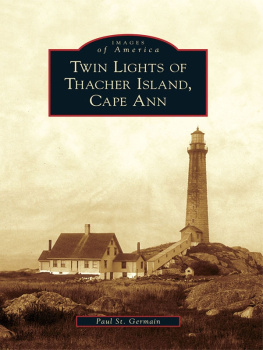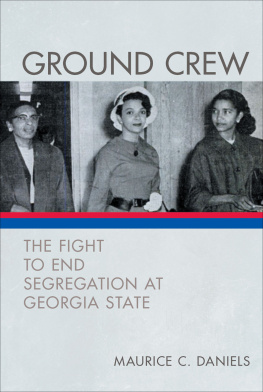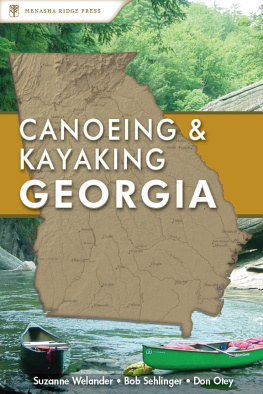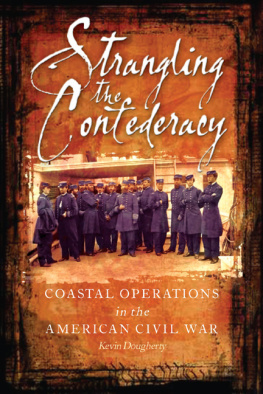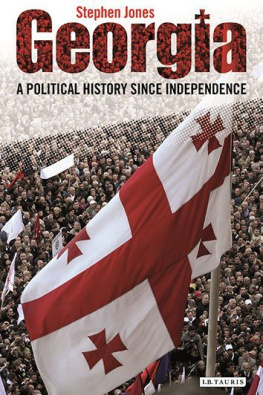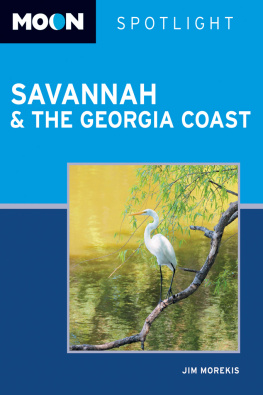Saving the Georgia Coast
Saving the Georgia Coast
A Political History of the Coastal Marshlands Protection Act
P AUL B OLSTER


2020 by the University of Georgia Press
Athens, Georgia 30602
www.ugapress.org
All rights reserved
Set in 11.5/15 Garamond Premier Pro by Rebecca A. Norton
Printed and bound by Sheridan Books, Inc.
The paper in this book meets the guidelines for permanence and durability of the Committee on Production Guidelines for Book Longevity of the Council on Library Resources.
Most University of Georgia Press titles are available from popular e-book vendors.
Printed in the United States of America
20 21 22 23 24 C 5 4 3 2 1
Library of Congress Cataloging-in-Publication Data
Names: Bolster, Paul, author.
Title: Saving the Georgia coast : a political history of the
Coastal Marshlands Protection Act / Paul Bolster.
Other titles: Wormsloe Foundation nature book.
Description: Athens : The University of Georgia Press, [2020] |
Series: A Wormsloe Foundation nature book |
Includes bibliographical references and index.
Identifiers: LCCN 2019049555 | ISBN 9780820357300 (hardcover) | ISBN 9780820357362 (ebook)
Subjects: LCSH : Georgia. Coastal Marshlands Protection ActHistory. |
Wetland conservationLaw and legislationGeorgiaHistory20th century. | Coastal zone managementGeorgiaAtlantic CoastHistory20th century. Classification: LCC KFG 451.7 A 35197 B 65 2020 | DDC 346.75804/409146dc23 LC record available at https://lccn.loc.gov/2019049555
To Livija Riki Bolster,
my wife and partner for 50 years and the Latvian girl within her.
The fate of these islands, these marshes and the waters beneath them is yet to be determined. Suffering the laws of nature since the dawn of time, this fragile zone so recently invaded by the modern human horde now awaits the laws of man.
R EID H ARRIS
Contents
Illustrations
Maps and Charts
Photographs after page 188
Acknowledgments
I am indebted to many friends and family who believed I could write this book even when I doubted myself. My small Inkfingers writing group of Debby Miller, Sheila Connors, Carla Schissel, Kaaren Nowicki, and my wife listened critically to my readings and advised on how to simplify the story for the general reader who didnt live and breathe the legislative process. My family endured listening to me endlessly talk about the book as I researchedand still encouraged me.
My University of Georgia dissertation advisor, Robert Griffith, was a young historian who died before he had a chance to see the results of my scholarship. Whenever I was in Washington, D.C., he made time to meet and encouraged me in the work I was doing as a member of the Georgia General Assembly. He was a careful, thoughtful, and caring person, and I hope he would be pleased that his mentoring made a late but positive contribution to the history of Georgia.
During my twelve years in the Georgia House of Representatives I had the rare privilege of knowing the political leaders of the state. Most were committed to making decisions that they honestly believed were in the best public interest. In the House chamber Sidney Marcus sat on one side and George Hooks on the other; Bill Dover was at my back, and Gerald Horton at the end of the row. It was enlightening to watch them build support for proposals small and large. I am thankful to all the people who were closely involved in setting state policy and wish there was more understanding of the dedicated work required to enact legislation.
I didnt know Reid Harris when he was alive, but he left a detailed record of his work that allows us to see him. His self-published memoir of the Coastal Marshlands Protection Act is a unique contribution. Few legislators have given us this kind of insight into the legislative process. I wish more would preserve the details of their legislative life and provide us candid observations that would build the publics faith in the legislative process and government.
It has been my great pleasure to get to know Dr. Fred Marland. His copious dusty files and long conversations filled in many of the gaps in the written documentationbut not just that. Fifty years ago he left his lab and research on Sapelo and took his scientific knowledge to public hearings. He walked the halls of the Capitols third floor talking to legislators. He helped Reid Harris and legislators understand the science of the marsh on which public policy could rest. His engagement in the legislative process is a model for the scientists of today.
The professional archivists and librarians throughout the state have to a person been ready and eager to open their treasures to all who come looking. They have preserved much of the states political history in document and oral form. They need more political leaders to be liberal with their papers. Mine will be there soon.
The editors at the University of Georgia Press, especially Patrick Allen, Jon Davies, and Deborah Oliver, have been very encouraging of the work and pushed for a high standard of documentation and smooth composition. Deborah did fact checking and sent me back to the sources on a number of occasions.
Above all, there would not be a book without the incredible help of my wife of fifty-plus years, Livija Riki Bolster. She is a far better writer than I will ever be. If you find the narrative lively, the stories enticingly told, and characters three dimensional, it is her hand that reshaped my plodding fact-based style. She has stuck with me through many expectationsthe preacher, the teacher, the legislator, the homeless advocate, and now a fledgling writera partner and advisor in all of it.

Georgia coast protected lands, 2019. (Courtesy of Jason Lee, earth ecologist, DNR Coastal Division, Brunswick, Georgia)
Saving the Georgia Coast
Introduction
The world lies east: how ample, the marsh and the sea and the sky! A league and a league of marsh-grass, waist-high, broad in the blade.
S IDNEY L ANIER , The Marshes of Glynn
My green, stubby-nosed REI kayak had taken me across the Back River from Tybee Island. I was alone (not advisable for most amateurs like myself) in the late fall when all the sunseekers were back in the city. I made a quick landfall on the slim barrier island that is the most prominent part of what the map calls Little Tybee Island. Its sandy beach is less than a mile long, but it is one of the fourteen named coastal islands that protect a hundred miles of the Georgia coast. It was the pristine sandy beach and the solitude of the island that drew me. I walked the sand and observed the shells and decaying cord grass that hinted at the animal life thriving in the waters surrounding the island. Birds sounded their call from the thick-wooded upland beyond the beach and the migrating flocks of shorebirds swarmed the sandbars at the end of the island looking for food. On that day I was the lone representative of the human race as I stretched out on the sand and watched the Atlantics waves rhythmically slap the shore.
On another day my kayak slipped almost soundlessly through Jacks Cut into the waterway hidden by marsh grass on either side. This marsh river opened between two sandbars to accommodate the tidal flow that twice a day services the marshes reaching out behind the slim barrier island. The cut is the gateway to the expansive marsh that dominates the geography of the island. It has more than sixty hammocks that protrude above the water at high tide, but the marsh grass captures the thick black mud when the tidal waters subside. It has taken thousands of years for the sediments from Georgia rivers to build up the fertile soil of the marsh. The mud and the marsh grass cover most of Little Tybee and stretch almost as far as one can see to the edges of Savannah subdivisions.
Next page

